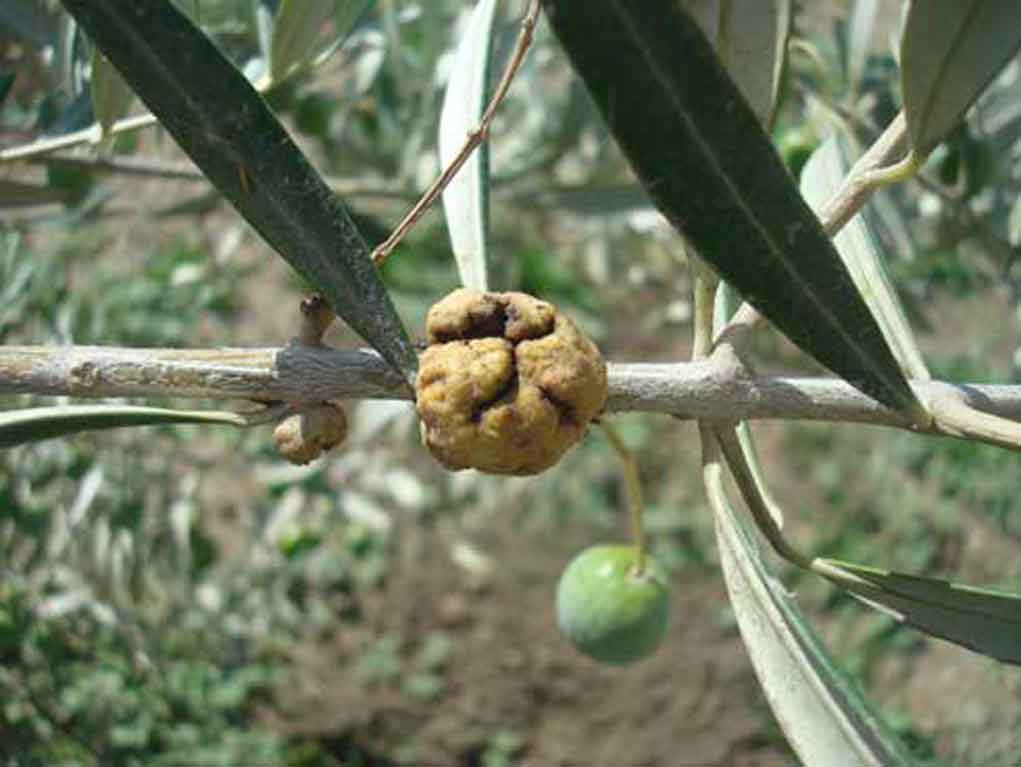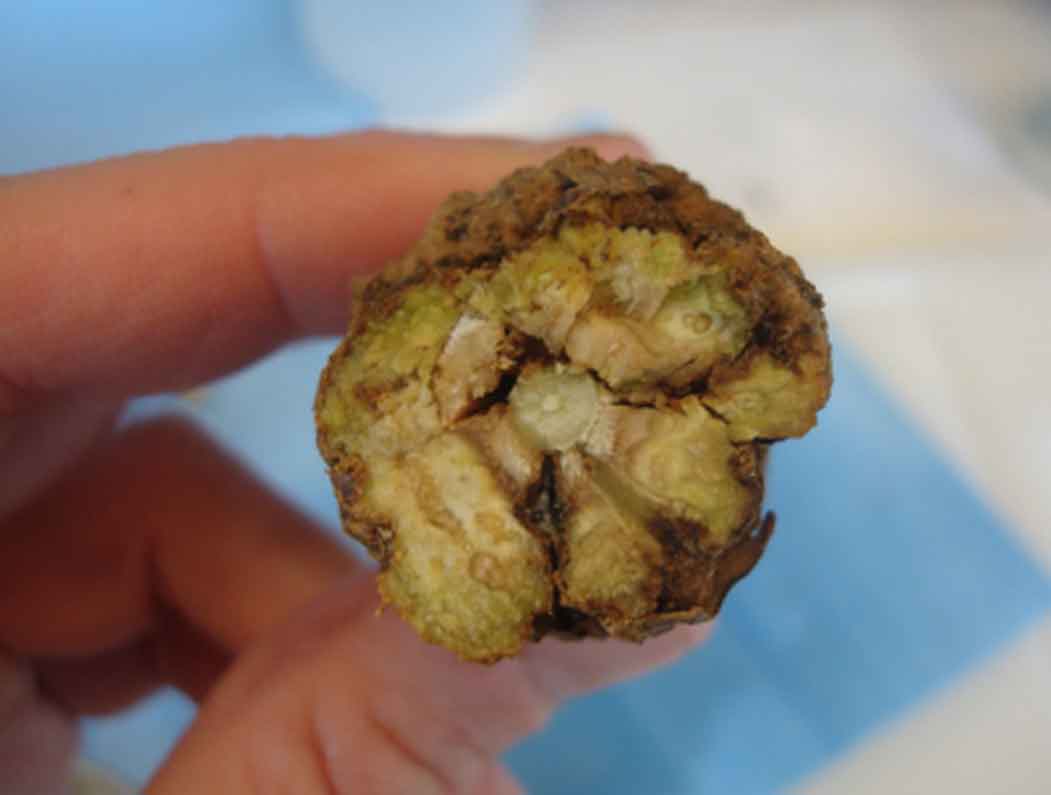|
|
| Olive Knot |
| Olive knot caused by a bacteria, Pseudomonas syringae pv. savastanoi, has affected olive trees since ancient times. All cultivars are susceptible, and damage can be severe. Olive knot appears as rough galls or swellings about 1.3 to 5cm in diameter. Openings are necessary for penetration of the bacteria and are provided by leaf and blossom scars, pruning injuries, bark cracks made by freezing, or wounds that occur during orchard operations. They can appear on twigs, branches, trunks, leaves, or fruit stems. |
|
 |
|
| The galls interfere with the transport of water and sugar, causing defoliation and death of twigs and branches. Olive knot can kill trees if infections occur on and girdle the trunks of young trees through injury by mechanical harvesters. It reduces tree productivity by girdling twigs and branches and causing dieback Bacteria survive in the knots and are readily spread by water at all times of the year. |
 |
The disease is restricted to the above ground part of the tree and does not affect roots. Most natural infections in California happen during the rainy season between October and June. Knots develop while the tree is actively growing, in spring and early summer. Therefore, infections established in late fall are not noticeable until spring, but spring infections produce galls within 10 to 14 days. Olive knot is difficult to control. Prevention is the only reliable strategy. |
| Applications of copper containing bactericides to protect leaf scars and other injuries minimize the disease, but they must often be repeated to protect new wounds as they appear. A minimum of two applications is usually necessary: one in the fall before the rain starts and one in the spring when most leaves have shed. It is also helpful to carefully prune during the dry season (July to August) to remove galls on twigs and branches. Because the bacteria may be carried on pruning shears, be sure to disinfect them frequently if pruning at other times during the year. Keep in mind that copper treatments should never be applied before harvest. |
|
|
|
|

